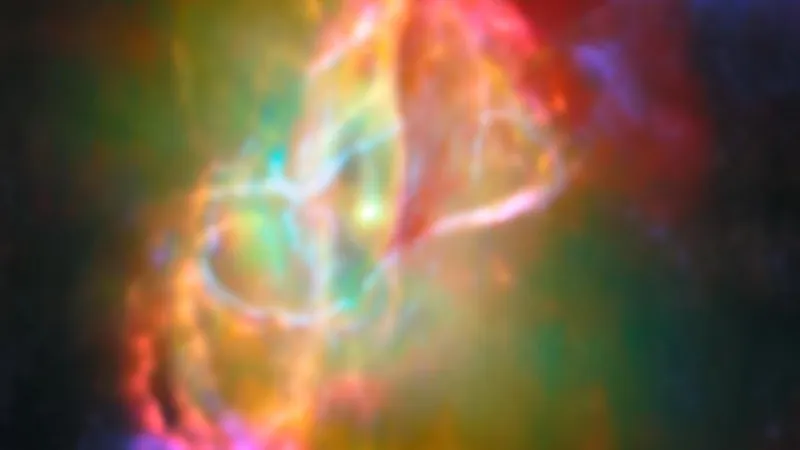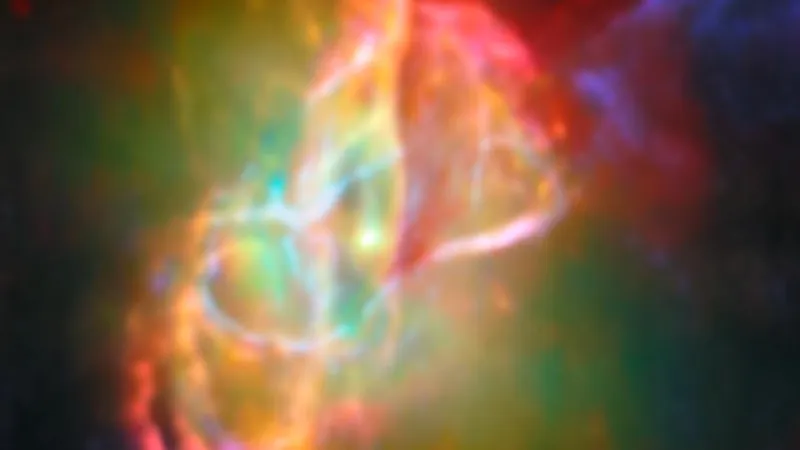
Stunning Discovery: Dead Star Sparks Building Blocks of New Worlds in Captivating Nebula Image
2025-08-28
Author: Emma
A Cosmic Breakthrough Revealed By JWST
In an awe-inspiring first, the James Webb Space Telescope (JWST) has captured the remarkable formation of cosmic dust particles that are the building blocks for planets. This groundbreaking discovery revolves around a dead star, offering fresh insights into how essential planetary materials come together.
The Mystical Butterfly Nebula and Its Secrets
Located about 3,400 light-years away in the picturesque constellation Scorpius, the Butterfly Nebula, or NGC 6302, represents the dramatic end of a sun-like star's life. Once radiant with hydrogen, this star has now exhausted its fuel, transforming into a celestial spectacle. Its outer layers have been expelled, creating the nebula, while the scorching core remains, manifesting as a white dwarf with a temperature soaring to 220,000 degrees Celsius (396,000 degrees Fahrenheit).
A Closer Look at the Nebula's Structure
The Butterfly Nebula features a stunning bi-polar shape, with two enormous lobes that resemble wings. At the center is a torus of dark dust viewed edge-on, making it appear as the body of the butterfly. The JWST utilized its Mid-Infrared Instrument (MIRI), supplemented by ALMA radio telescope data, to target this intriguing central torus.
Tiny Particles, Big Implications
Interstellar dust typically comprises particles around 0.1 microns in size, but the JWST discovered grains of crystalline silicate dust in the torus measuring a millionth of a meter. This is significantly larger than usual cosmic dust, aligning more closely with the grains found in young, star-forming regions. These larger grains are crucial as they begin the planet-building process.
From Starlight to Stardust
Dust created in ancient star systems feeds into new stellar formations, but how these larger dust grains form had long been a mystery. Now, the JWST's findings may shine a light on this cosmic puzzle. Mikako Matsuura from Cardiff University remarked, “For years, scientists have debated how cosmic dust forms in space, and now we may finally have a clearer picture.”
Complex Chemistry at Play
Remarkably, the dust grains in the Butterfly Nebula suggest a prolonged growth period, accelerated by chemical reactions ignited by the intense heat of the white dwarf. These observations even revealed quartz crystal grains within the torus, showcasing a dual nature of formation—both serene gemstones and turbulent cosmic grime.
Fascinating Findings: Carbon-Based Molecules
Moreover, the JWST identified carbon-based molecules known as PAHs (polycyclic aromatic hydrocarbons), commonly found on Earth in burnt toast and car exhaust. These molecules, abundant in deep space, are vital to the chemistry of star- and planet-forming regions, potentially paving the way for the emergence of life. In the Butterfly Nebula, PAHs appear in flat ring-like structures, possibly formed by collisions between gas and particles expelled by the white dwarf.
A Cosmic Cycle of Life
As the Butterfly Nebula's brilliance will eventually fade into the vastness of space over tens of thousands of years, the PAHs and quartz grains—born from stellar death—will continue their journey. They will meander through the cosmos, seeking new homes in gas clouds, where they will contribute to the birth of future star systems and planets.









 Brasil (PT)
Brasil (PT)
 Canada (EN)
Canada (EN)
 Chile (ES)
Chile (ES)
 Česko (CS)
Česko (CS)
 대한민국 (KO)
대한민국 (KO)
 España (ES)
España (ES)
 France (FR)
France (FR)
 Hong Kong (EN)
Hong Kong (EN)
 Italia (IT)
Italia (IT)
 日本 (JA)
日本 (JA)
 Magyarország (HU)
Magyarország (HU)
 Norge (NO)
Norge (NO)
 Polska (PL)
Polska (PL)
 Schweiz (DE)
Schweiz (DE)
 Singapore (EN)
Singapore (EN)
 Sverige (SV)
Sverige (SV)
 Suomi (FI)
Suomi (FI)
 Türkiye (TR)
Türkiye (TR)
 الإمارات العربية المتحدة (AR)
الإمارات العربية المتحدة (AR)